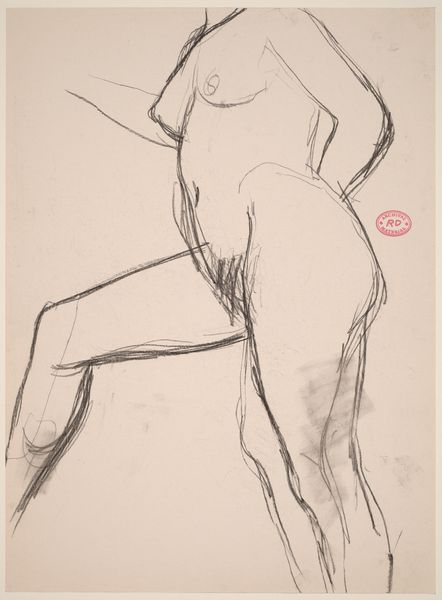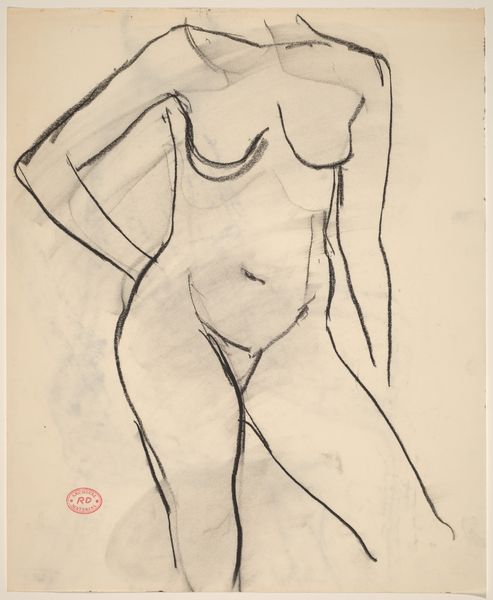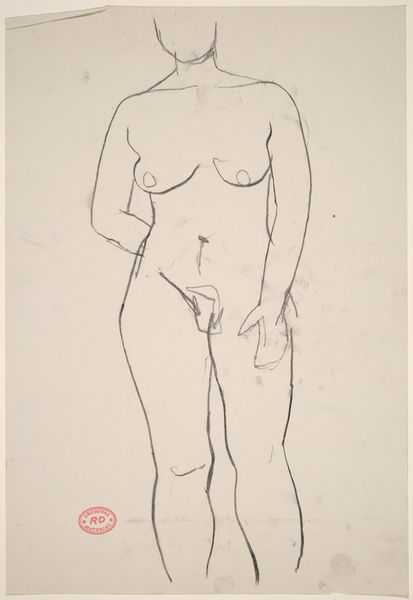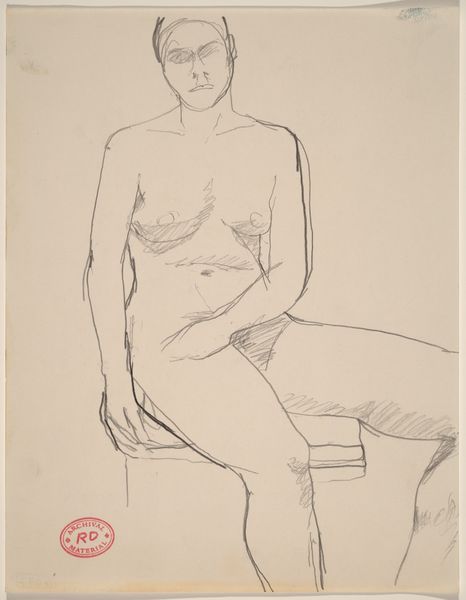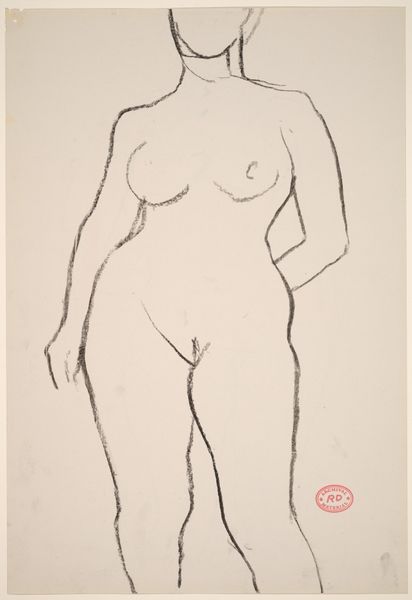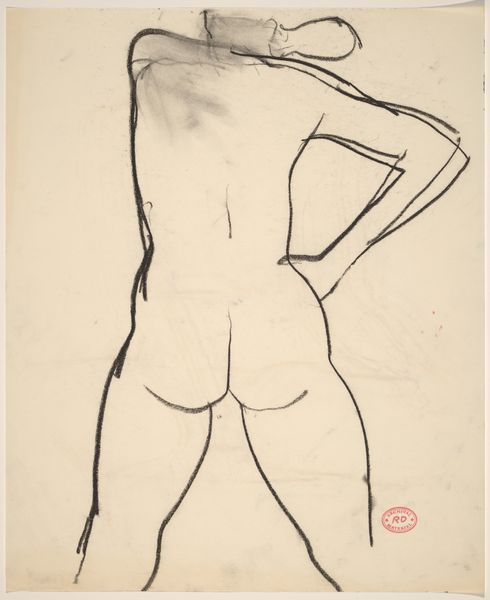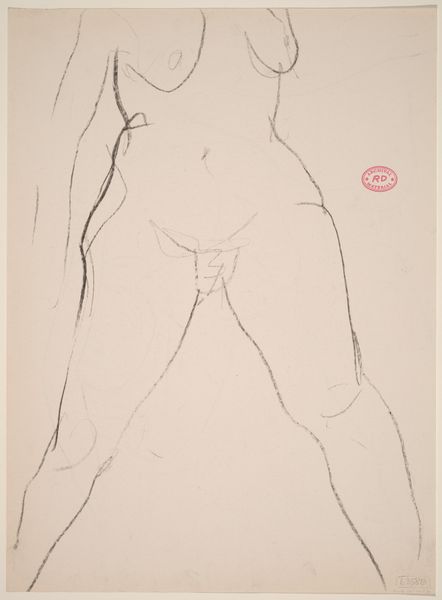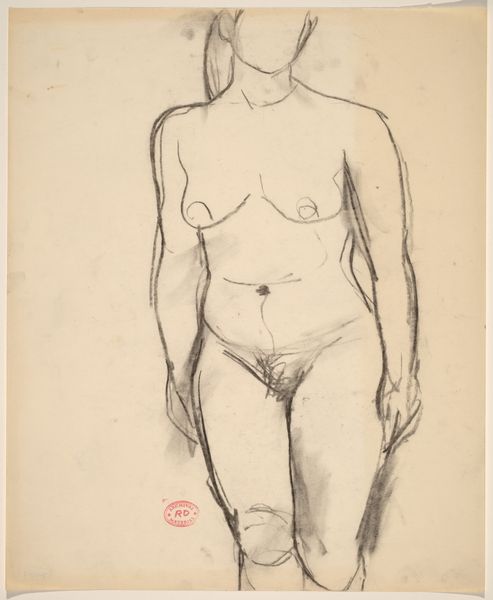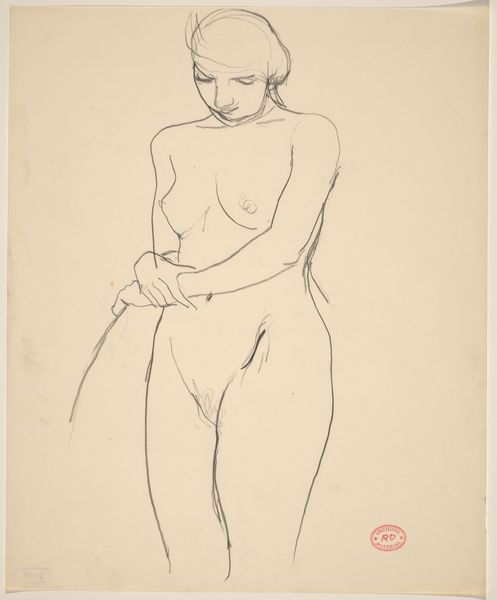![Untitled [contrapposto female nude] by Richard Diebenkorn](/_next/image?url=https%3A%2F%2Fd2w8kbdekdi1gv.cloudfront.net%2FeyJidWNrZXQiOiAiYXJ0ZXJhLWltYWdlcy1idWNrZXQiLCAia2V5IjogImFydHdvcmtzL2UxNDJmMmU1LTA4M2EtNDA0OS1hYzMwLTY1ZjUyOGZjNmI1Zi9lMTQyZjJlNS0wODNhLTQwNDktYWMzMC02NWY1MjhmYzZiNWZfZnVsbC5qcGciLCAiZWRpdHMiOiB7InJlc2l6ZSI6IHsid2lkdGgiOiAxOTIwLCAiaGVpZ2h0IjogMTkyMCwgImZpdCI6ICJpbnNpZGUifX19&w=3840&q=75)
drawing, pencil
#
drawing
#
figuration
#
bay-area-figurative-movement
#
pencil
#
academic-art
#
nude
Dimensions: overall: 27.9 x 21.6 cm (11 x 8 1/2 in.)
Copyright: National Gallery of Art: CC0 1.0
Editor: This is an untitled drawing, a contrapposto female nude by Richard Diebenkorn, made sometime between 1955 and 1967, using pencil on paper. It feels almost classical in its pose, yet the sketchy quality makes it very modern. What catches your eye in this piece? Curator: I see a negotiation of the artistic process, quite literally. Consider the graphite itself – mined, processed, formed into a tool – pressed onto the pulp of the paper. It reveals the artist's labor. It invites us to contemplate how representation is produced through very deliberate actions involving specific materials. Think about how this differs from, say, the smooth finish of a classically rendered oil painting, which attempts to conceal the labor involved. Editor: So, you're focusing less on the nude itself and more on the… making of the nude? Curator: Exactly. This drawing almost foregrounds its own creation. Diebenkorn's lines are not trying to perfectly replicate an idealized form. Instead, they trace and re-trace, revealing the artistic decisions – and perhaps struggles – inherent in the act of drawing. Look at the figure’s head; the absence there isn't a flaw, but a visible hesitation or choice. That conscious selection has just as much power. Editor: That makes me think about the 'archival material' stamp; it’s another layer of production and material consideration adding another interpretation to this drawing. Curator: Precisely. It further highlights the drawing's journey, transforming it from a study into an artifact, a commodity, or an object worthy of preservation and examination. Editor: That gives me a lot to think about regarding not only the subject of this drawing, but its life cycle, too. Thanks. Curator: It’s interesting to trace the production and the context in which value is placed, and on what. Thanks.
Comments
No comments
Be the first to comment and join the conversation on the ultimate creative platform.
